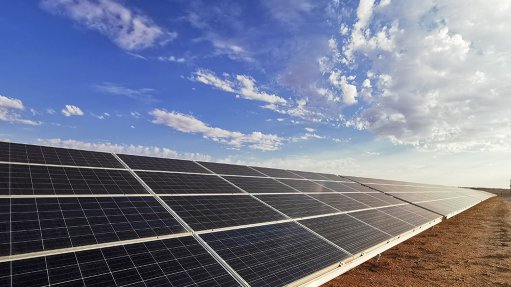Carbon taxes – key considerations for policy makers and stakeholders
In line with global trends, the South African government wants to develop a greener economy.
One way would be through a carbon tax, designed to curb emissions by increasing the tax burden on high- polluting industries. An updated carbon tax discussion paper was released on May 2, giving a much clearer policy direction to business, government and society.
While green taxes can help the environment, they inevitably have an impact on those who have to pay them, and can have a major effect on the viability of some businesses. This article is the first in a series of three articles in which we will discuss the issues we believe government and business need to be considering in this important policy debate, reflecting on global experience.
One of the South African government’s objectives is to develop a greener economy, and this is clearly stated in various government policy documents, including the National Development Plan. South Africa announced its ambitious greenhouse- gas (GHG) emissions reduction targets at the United Nations Framework Convention on Climate Change’s fifteenth Conference of the Parties, or COP 15, held in Copenhagen in December 2009. Since then, there has been much debate on how these targets will be achieved.
At COP 16, in Cancún, Mexico, in November 2010, 90 countries, which are collectively responsible for 83% of global emissions, committed to taking action to cut GHG emissions and to promote sustainable development. However, little progress was made in subsequent meetings – in Durban and Doha – to specify the steps needed to achieve these commitments, especially at global level. Therefore, it falls to policymakers at a national level to determine the best way to cut emissions, while recognising the need to protect sensitive domestic industries and to achieve economic growth.
Regulation is one way of ensuring that technologies or processes that curb emissions are chosen. This has been tried in the building industry in South Africa with a requirement that new buildings need to secure 50% of their power from solar and other green technologies. However, such an approach is not the best way forward in every case, as it can be difficult to design and apply across all the industries and sectors in an economy. Market-based approaches, with regulations that put a price on GHG emissions, are simpler to implement and allow companies to choose their own methods to curb emissions, ideally at the lowest cost and aligned with their business strategy.
Two primary methods have been used to introduce carbon pricing – carbon trading and carbon taxes. While these approaches have important differences, the challenges that regulators face when designing carbon pricing schemes are remarkably similar. We shall be focusing on carbon taxes in these three articles.
What is a Carbon Tax?
A carbon tax approach involves a direct levy on emissions. It can mean targeted taxes on specific goods and fuels, or it could be more widely applied across the whole economy. With a direct carbon tax, polluting entities are obliged to report their emissions on a yearly basis and pay a tax corresponding to the level of their emissions.
Another approach might mean a tax levied against a specific fuel or fuels, such as coal, petrol or diesel, with the tax based on the carbon content of the fuel and collected at the point of purchase.
A related concept, currently implemented by South Africa, involves a tax on new passenger vehicles based on their efficiency in curbing emissions. A carbon tax delivers price certainty for market participants, but its effect in cutting emissions may be uncertain – because it can be difficult to predict exactly how those who are being targeted will react.
The stakes are high, and this is an issue that is not going to go away. The big challenge facing South Africa is how to implement carbon taxes and still achieve economic growth and development goals. It is important that businesses analyse the recent carbon tax discussion paper and submit their comments by the deadline of August 2.
In our next two articles, we will be looking in detail at the goals and features of carbon taxes in the South African context and how South African industry will feel the impact of carbon taxes.
Comments
Press Office
Announcements
What's On
Subscribe to improve your user experience...
Option 1 (equivalent of R125 a month):
Receive a weekly copy of Creamer Media's Engineering News & Mining Weekly magazine
(print copy for those in South Africa and e-magazine for those outside of South Africa)
Receive daily email newsletters
Access to full search results
Access archive of magazine back copies
Access to Projects in Progress
Access to ONE Research Report of your choice in PDF format
Option 2 (equivalent of R375 a month):
All benefits from Option 1
PLUS
Access to Creamer Media's Research Channel Africa for ALL Research Reports, in PDF format, on various industrial and mining sectors
including Electricity; Water; Energy Transition; Hydrogen; Roads, Rail and Ports; Coal; Gold; Platinum; Battery Metals; etc.
Already a subscriber?
Forgotten your password?
Receive weekly copy of Creamer Media's Engineering News & Mining Weekly magazine (print copy for those in South Africa and e-magazine for those outside of South Africa)
➕
Recieve daily email newsletters
➕
Access to full search results
➕
Access archive of magazine back copies
➕
Access to Projects in Progress
➕
Access to ONE Research Report of your choice in PDF format
RESEARCH CHANNEL AFRICA
R4500 (equivalent of R375 a month)
SUBSCRIBEAll benefits from Option 1
➕
Access to Creamer Media's Research Channel Africa for ALL Research Reports on various industrial and mining sectors, in PDF format, including on:
Electricity
➕
Water
➕
Energy Transition
➕
Hydrogen
➕
Roads, Rail and Ports
➕
Coal
➕
Gold
➕
Platinum
➕
Battery Metals
➕
etc.
Receive all benefits from Option 1 or Option 2 delivered to numerous people at your company
➕
Multiple User names and Passwords for simultaneous log-ins
➕
Intranet integration access to all in your organisation


















